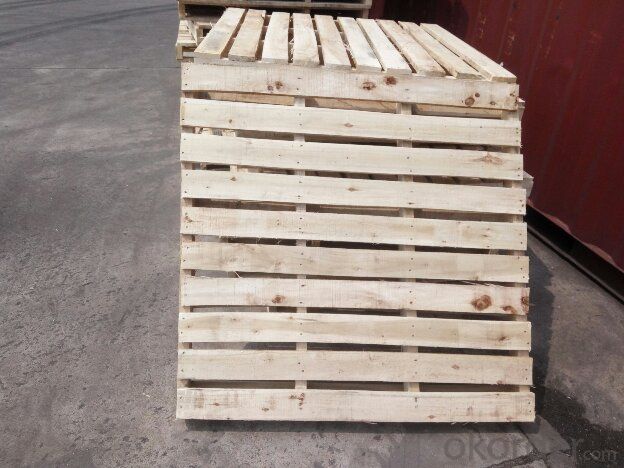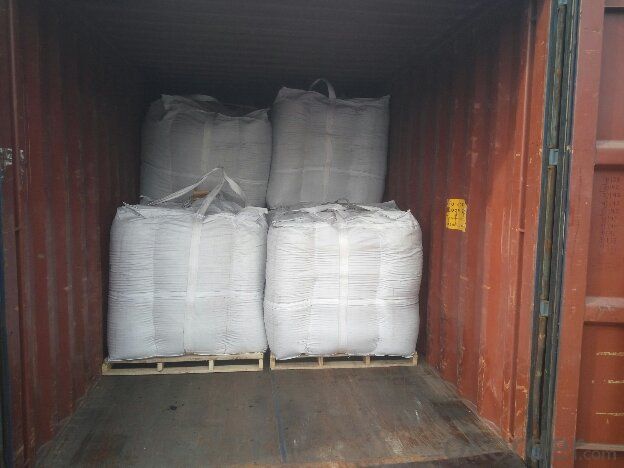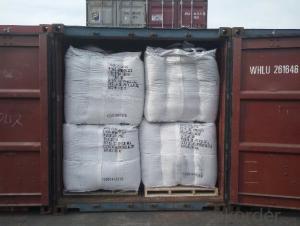12% Ash Foundry Coke for Foundry Plant Around the World
- Loading Port:
- Tianjin
- Payment Terms:
- TT OR LC
- Min Order Qty:
- 20.8
- Supply Capability:
- 1008 m.t./month
OKorder Service Pledge
OKorder Financial Service
You Might Also Like
Brief Introduction
Foundry Coke is the main fuel of melting iron in the oven. It can melt the materials in the over, make the iron reach great heat, and keep good air permeability by sustain stock column. Thus, the foundry coke should have the characteristics of big block, low reactivity, small porocity, enough anti-crush strengh, low ash and low sulphur.
The coke handled by our cooperation is made from superior coking coal of Shanxi province. Provided with the advantages of low ash, low sulphur and high carbon. Our coke is well sold in European, American, Japanese and South-east Asian markets. We are expanding more and more markets. we supply Foundry Coke long-term, its characteristic is best strength, low sulfur and phosphorus,thermal stability.
Specifications:
ASH % | 8% max | 10% max | 12% max |
V.M.% MAX | 1.5% max | 1.5% max | 2% max |
SULFUR % | 0.65% max | 0.65% max | 0.7% max |
MOISTURE | 5% max | 5% max | 5% max |
Size | 80mm-120mm,80-150,100-150mm, or as request | ||
Features
1. Our quality is always quite good and stable which is producing and packing according to customers' requirements.
2. Putting Client profile into first, achieved mutual benefit.
3. Good partner on business. It's a good and wise choice for customers' to purchase from us. It's our great honor to cooperate with you.
4. We can supply documents as follows:
- bill of loading,
-Invoice,
-Packing List
-Insurance
-standard inspection pictures of the container as specified by INSPECTORATE
-or more requested by buyer.
Pictures


FAQ
1. What is the packing?
In 25kg bag/ In jumbo bags without pallet/ Two jumbo bags with one pallet/ or as customers’ request
2. What is the production capacity?
10 thousand tons per month
3 What is payment term?
Irrevocable LC at sight/ 20% down payment by T/T and 80% against BL copy byT/T/ or to be discussed
4 What is the service?
We will send sample to the third party(CIQ, CCIC, SGS,BV or to be discussed) for checking, and present the test certificate and loading repot of shipment.
- Q:How are carbon nanotubes used in various industries?
- Carbon nanotubes have found applications in numerous industries due to their incredible versatility. With their unique properties, they are ideal for a wide range of uses. In the electronics industry, carbon nanotubes enhance the performance of electronic devices. They act as conductive additives in polymers, improving electrical conductivity. This makes them suitable for flexible displays, touchscreens, and wearable electronics. Moreover, carbon nanotubes serve as field emitters in flat-panel displays, resulting in brighter and more energy-efficient screens. The aerospace and automotive industries benefit from carbon nanotubes as well. Their exceptional strength and low weight make them perfect for manufacturing lightweight and durable composites for aircraft and automobile parts. These composites offer improved fuel efficiency, increased load-bearing capacity, and enhanced resistance to impact and corrosion. Consequently, they are crucial in the development of next-generation vehicles and aircraft. Carbon nanotubes have also made significant contributions to the energy sector. They have been instrumental in developing more efficient and durable batteries and supercapacitors. With their high surface area and excellent electrical conductivity, carbon nanotubes enable faster charging and discharging rates, leading to improved energy storage and longer battery life. Additionally, they are being explored as catalysts for fuel cells, promising a more sustainable and efficient power source for the clean energy industry. The medical and healthcare industries utilize carbon nanotubes in various applications as well. They act as drug delivery vehicles, allowing targeted delivery of medications to specific cells or tissues. This enhances treatment efficacy and reduces side effects. Furthermore, carbon nanotubes have unique optical properties that can enhance the sensitivity and resolution of medical imaging techniques like MRI and CT scans, potentially advancing medical imaging capabilities. Carbon nanotubes also find applications in the construction industry, where they reinforce concrete and enhance its mechanical properties. By adding carbon nanotubes to concrete, it becomes stronger, more durable, and resistant to cracking and corrosion. This leads to safer and longer-lasting infrastructure, such as bridges and buildings. In summary, carbon nanotubes have revolutionized various industries by offering exceptional properties, including high strength, electrical conductivity, and light weight. From electronics to aerospace, energy to healthcare, and construction to automotive, carbon nanotubes have found applications in a multitude of sectors, enabling the development of innovative and advanced technologies.
- Q:Carbon emissions trading stocks latest list of carbon emissions trading stocks what?
- Carbon trading concept of a total of 21 listed companies, of which 12 carbon trading concept listed companies trading on the Shanghai Stock Exchange, and 9 other carbon trading concept listed companies trading in the Shenzhen stock exchange.Automatic matching based on the cloud financial leading excavator, carbon trading stocks leading shares most likely from the following stock was born in Tianke, electrical, environmental protection up to confidence.
- Q:How does carbon contribute to the flavor of food?
- Carbon contributes to the flavor of food through the process of caramelization, which occurs when sugars break down and react with heat. This reaction produces a variety of flavor compounds, including those that give foods a rich, nutty, or sweet taste. Additionally, carbon is an essential component of organic molecules like amino acids and fats, which play a crucial role in creating the overall flavor profile of different foods.
- Q:Made of high strength structural partsThe market quality of the carbon fiber plate is too much, the price is low, do not know how to choose. A knowledgeable friend can introduce larger enterprises? The quality of the carbon fiber board produced must be better and the performance should be stable!
- You are not for the prestressing bar, if you find the building reinforcement for Tianjin Beijing card, if you do the structure reinforcement for Jiangsu and Wuxi via the new material industry, these are relatively well-known.
- Q:How is carbon used in the production of pigments?
- Carbon is commonly used in the production of pigments due to its ability to create vibrant and deep colors. Carbon-based pigments, also known as carbon blacks, are produced by the incomplete combustion of hydrocarbons, such as natural gas or petroleum. The carbon particles produced during this process are then processed and purified to create a fine powder that can be used as a pigment. These carbon-based pigments have a wide range of applications in various industries, including inks, paints, plastics, and cosmetics. In the production of inks, carbon black is often added to improve the color intensity and opacity of the ink. It is also used in the manufacturing of black pigments for paints and coatings, providing a rich and deep black color. Carbon-based pigments are also used in the production of plastics. Adding carbon black to plastic materials can enhance their UV resistance, making them more durable and long-lasting. This is particularly important in outdoor applications where exposure to sunlight can cause fading and degradation. Additionally, carbon-based pigments are commonly used in the cosmetics industry. They are added to various cosmetic products, such as eyeliners, mascaras, and lipsticks, to create intense black or dark shades. Carbon black pigments are preferred in cosmetics due to their stability and ability to deliver consistent color. In conclusion, carbon is widely used in the production of pigments due to its ability to create vibrant and deep colors. Carbon-based pigments find applications in various industries, including inks, paints, plastics, and cosmetics, where they enhance color intensity, provide UV resistance, and deliver rich black shades.
- Q:How does carbon impact ocean acidity?
- Carbon impacts ocean acidity through a process called ocean acidification. When carbon dioxide (CO2) from the atmosphere is absorbed by seawater, it reacts with water molecules to form carbonic acid. This acidification process lowers the pH levels of the ocean, making it more acidic. The primary source of carbon dioxide in the atmosphere is human activities such as burning fossil fuels, deforestation, and industrial processes. As the concentration of CO2 increases in the atmosphere due to these activities, more and more of it is absorbed by the oceans. The increase in acidity has several detrimental effects on marine life. Many organisms that have calcium carbonate shells, such as coral reefs, shellfish, and some plankton species, are particularly vulnerable to ocean acidification. The increased acidity makes it harder for these organisms to build and maintain their shells, leading to reduced growth rates and increased mortality. Ocean acidification also affects the entire marine food web. It disrupts the balance between predators and prey, as some species of plankton are less able to develop and survive in acidic conditions. This can have cascading effects on the entire ecosystem, impacting fish populations, marine mammals, and ultimately even humans who rely on seafood for sustenance. Additionally, ocean acidification can have significant economic impacts. Commercial fisheries and tourism industries that depend on healthy marine ecosystems can suffer due to the decline in fish populations and the degradation of coral reefs. To mitigate the impacts of carbon on ocean acidity, it is crucial to reduce carbon dioxide emissions and transition to cleaner and more sustainable energy sources. Taking steps to protect and restore marine ecosystems, such as creating marine protected areas and implementing sustainable fishing practices, can also help to mitigate the effects of ocean acidification.
- Q:How does carbon affect the quality of indoor air?
- Carbon can have a significant impact on the quality of indoor air. One of the main contributors to carbon in indoor air is carbon dioxide (CO2), which is produced through the process of respiration by humans and animals. High levels of CO2 can cause discomfort, as it can lead to feelings of drowsiness, headaches, and difficulty concentrating. In addition to CO2, carbon monoxide (CO) is another carbon compound that can be present in indoor air, mainly due to the incomplete combustion of fossil fuels in stoves, fireplaces, and furnaces. Carbon monoxide is highly toxic and can be life-threatening if present in high concentrations. Apart from these direct sources of carbon, indoor air can also be affected by volatile organic compounds (VOCs), such as formaldehyde, benzene, and toluene. These VOCs are released from various sources like building materials, furniture, cleaning products, and tobacco smoke. They can have adverse health effects, including eye, nose, and throat irritation, headaches, dizziness, and in some cases, even long-term health risks like cancer. To maintain good indoor air quality, it is essential to monitor and control the levels of carbon compounds in the air. Proper ventilation is crucial to ensure fresh air circulation and reduce the concentration of CO2 and other pollutants. Regular maintenance and inspection of fuel-burning appliances can prevent the build-up of carbon monoxide. Using low-VOC or VOC-free materials and products, as well as avoiding smoking indoors, can help minimize the release of harmful carbon compounds.
- Q:What is carbon fiber reinforced polymer?
- Combining carbon fibers with a polymer matrix creates a composite material known as carbon fiber reinforced polymer (CFRP). This material is both strong and lightweight. Carbon fibers are thin and strong, consisting of carbon atoms bonded together in a crystalline structure. These fibers are integrated into a polymer matrix, typically made of epoxy resin, which serves to bind the fibers together and offer support. The resulting combination of carbon fibers and polymer matrix yields a material with a high strength-to-weight ratio, making it suitable for diverse applications. CFRP is recognized for its exceptional stiffness, strength, and resistance to corrosion and fatigue. It finds extensive use in aerospace, automotive, sports equipment, and other industries that require lightweight and high-performance materials. Due to its unique properties, CFRP presents an excellent alternative to conventional materials such as steel, aluminum, and fiberglass. It offers superior strength and durability while significantly reducing weight.
- Q:Is the hardness or softness of the steel with higher carbon content?
- The increase of carbon content also reduces the weldability and corrosion resistance of steel, and increases the cold brittleness and aging tendency of steel.
1. Manufacturer Overview |
|
|---|---|
| Location | |
| Year Established | |
| Annual Output Value | |
| Main Markets | |
| Company Certifications | |
2. Manufacturer Certificates |
|
|---|---|
| a) Certification Name | |
| Range | |
| Reference | |
| Validity Period | |
3. Manufacturer Capability |
|
|---|---|
| a)Trade Capacity | |
| Nearest Port | |
| Export Percentage | |
| No.of Employees in Trade Department | |
| Language Spoken: | |
| b)Factory Information | |
| Factory Size: | |
| No. of Production Lines | |
| Contract Manufacturing | |
| Product Price Range | |
Send your message to us
12% Ash Foundry Coke for Foundry Plant Around the World
- Loading Port:
- Tianjin
- Payment Terms:
- TT OR LC
- Min Order Qty:
- 20.8
- Supply Capability:
- 1008 m.t./month
OKorder Service Pledge
OKorder Financial Service
Similar products
New products
Hot products
Related keywords





























